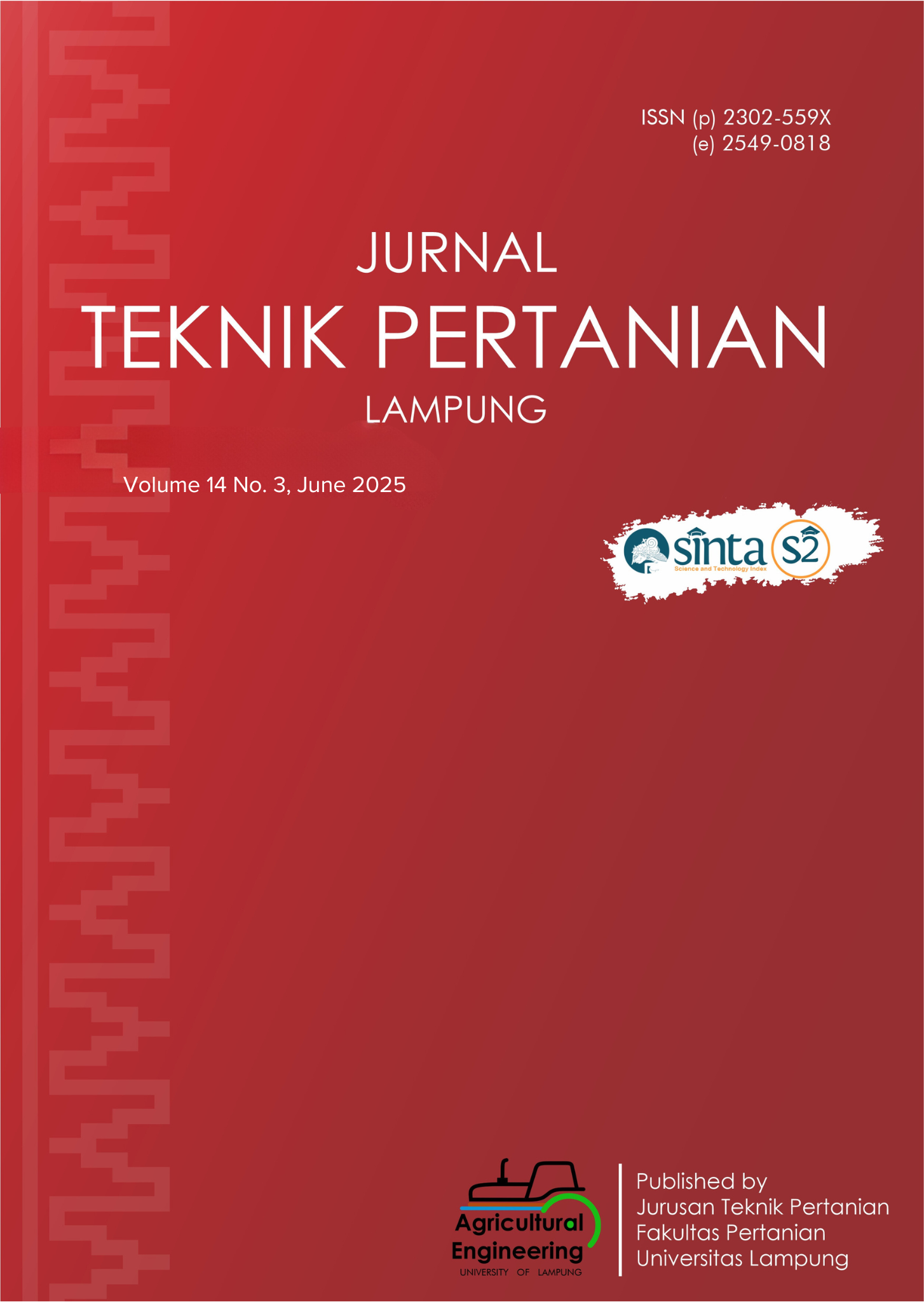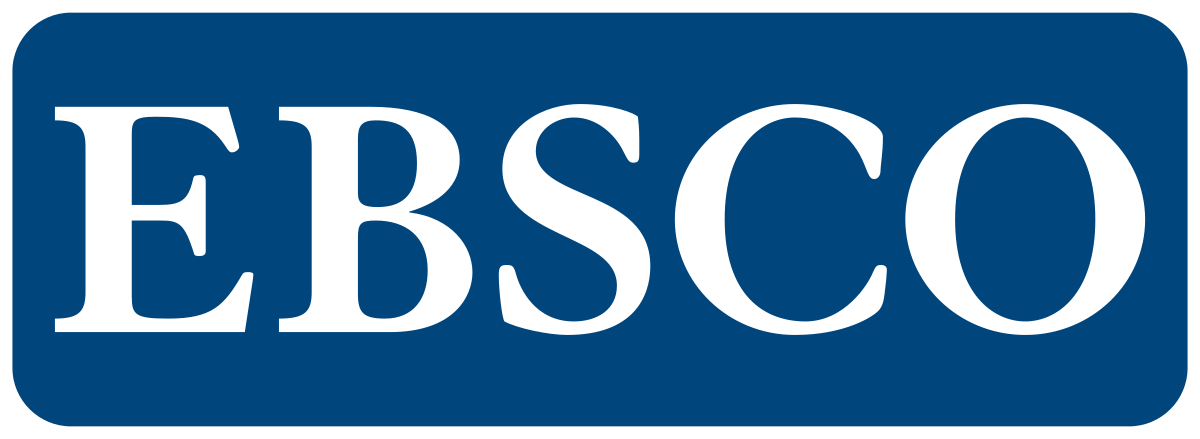Interpolation of Total Dissolved Solids (TDS) Concentration in A River Using Ordinary Kriging Method
DOI:
https://doi.org/10.23960/jtep-l.v14i3.858-865 Abstract View: 187
Abstract View: 187
Abstract
Water quality is a key indicator related to the sustainability of living things in a watershed. However, human activities have led to a decline in the water quality caused by industrial, domestic and agricultural waste. This study aims to predict the pattern of TDS parameters at unsampled points through a geostatistical approach, namely Kriging. Experimental measuements were conducted in the Bedadung River, Jember Regency, especially in a segment of Patrang to Wuluhan sub-districts. Currently, the river is classified as Class 3, which is below the standard, one of the water quality parameters is TDS (Total Dissolved Solid). The TDS estimation results were obtained in the range of 48.26 mg/L - 175.52 mg/L. The predicted value of TDS using the kriging method at unsampled points resulted in an RRMSE value of 8.40 %. This study revealed that the water quality of Bedadung River from Patrang to Wuluhan sub-districts was still below Class 2 standards, emphasizing the need for continuous monitoring and improvement efforts.
Keywords: Ordinary kriging, River water quality, Semivariogram, Total dissolved solid.
Downloads
References
Arbie, R.R., Nugraha, W.D., & Sudarno, S. (2015). Studi kemampuan selfpurification pada Sungai Progo ditinjau dari parameter organik DO dan BOD (Point source: Limbah sentra tahu Desa Tuksono, Kecamatan Sentolo, Kabupaten Kulon Progo, Provinsi D.I. Yogyakarta). Jurnal Teknik Lingkungan, 4(3), 1-15.
Arinal, V., & M. Azhari. (2023). Penerapan regresi linear untuk prediksi harga beras di Indonesia. Jurnal Sains dan Teknologi. 5(1), 341–346.
BPS (Badan Pusat Statistik). (2023). Jember Dalam Angka 2023. Badan Pusat Statistik Kabupaten Jember. Chuzaini, F., & Dzulkiflih, D. (2022). IoT monitoring kualitas air dengan menggunakan sensor suhu, pH, dan total dissolved solids (TDS). Jurnal Inovasi Fisika Indonesia (IFI), 11(3), 46–56.
Hamdanah, F.H., & Fitrianah, D. (2021). Analisis performansi algoritma linear regression dengan generalized linear model untuk prediksi penjualan pada usaha mikra, kecil, dan menengah. Jurnal Nasional Pendidikan Teknik Informatika: Janapati, 10(1), 23-32. https://doi.org/10.23887/janapati.v10i1.31035
Kifly, M.T.H., Perwira, I.Y., & Kartika, I.W.D. (2021). Kandungan padatan tersuspensi dan padatan terlarut air di hilir Sungai Ayung Bali. Current Trends in Aquatic Science, 4(2), 128-132. Mälicke, M. (2022). SciKit-gstat 1.0: A Scipy-flavored geostatistical variogram estimation toolbox written in Python. Geoscientific Model Development, 15(6), 2505–2532. https://doi.org/10.5194/gmd-15-2505-2022
Novita, E., Firmansyah, J.W., & Pradana, H.A. (2023). Penentuan indeks kualitas air Sungai Bedadung Kabupaten Jember menggunakan metode IP dan NSF-WQI. Jurnal Ilmu Lingkungan, 21(3), 495–502. https://doi.org/10.14710/jil.21.3.495-502
Pangestu, R., Riani, E., & Effendi, H. (2017). Estimasi beban pencemaran point source dan limbah domestik di Sungai Kalibaru Timur Provinsi DKI Jakarta, Indonesia. Jurnal Pengelolaan Sumberdaya Alam dan Lingkungan, 7(3), 219–226. https://doi.org/10.29244/jpsl.7.3.219-226
Pohan, D.A.S., Budiyono, B., & Syafrudin, S. (2016). Analisis kualitas air sungai guna menentukan peruntukan ditinjau dari aspek lingkungan. Jurnal Ilmu Lingkungan. 14(2), 63–71. https://doi.org/10.14710/jil.14.2.63-71
Pradana, H.A., Wahyuningsih, S., Novita, E., Humayrom A., & Purnomo, B.H. (2019). Identification of water quality and pollution load of Bedadung River at the intake of water treatment plant of PDAM Jember Regency. Jurnal Kesehatan Lingkungan Indonesia, 18(2), 135–143. https://doi.org/10.14710/jkli.18.2.135-143
Putri, N.A., Irawan, A.H., Rapiqi, H., Fudaeli, M., Iriansyah, I., Aisyah, S., & Bijaksana, U. (2024). Pengenalan dan BIMTEK penggunaan alat-alat kualitas air di Balai Benih Ikan Gunung Manau kepada siswa SMK PP Paringin. Jurnal Pengabdian Sosial, 1(8), 684–691. https://doi.org/10.59837/9p2hc614
Agustin, F., & Rijal, S.S. (2024). Analisis kandungan total dissolve solid dan pengaruhnya terhadap kelimpahan dan dominansi plankton di Sungai Brantas. Environmental Pollution Journal, 4(2), 1033-1048. https://doi.org/10.58954/epj.v4i2.196
Rohma, N.N. (2022). Perbandingan pendugaan metode Ordinary Kriging dan metode Ordinary Kriging dengan teknik jackknife. Map (Mathematics and Applications) Journal, 4(2), 101–111.
Ruswanti, D. (2020). Pengukuran performa support vector machine dan neural netwok dalam meramalkan tingkat curah hujan. Jurnal Gaung Informatika, 13(1), 66-75.
Sari, C.D.P., Lepong, P., & Natalisanto, A.I. (2019). Analisis penyebaran sifat fisis batuan reservoir dengan metode geostatistik (Studi kasus: Lapangan Boonsville, Texas, Amerika Serikat). Geosains Kutai Basin, 2(1), 1-7.
Setyowati, R.D.N. (2015). Status kualitas air DAS Cisanggarung, Jawa Barat. Al-Ard - Jurnal Teknik Lingkungan. 1(1), 37–45.
Wahyuningsih, S., Dharmawan, A., & Novita, E. (2020). Purifikasi alami Sungai Bedadung Hilir menggunakan pemodelan Streeter-Phelps. Jurnal Kesehatan Lingkungan Indonesia, 19(2), 95-102. https://doi.org/10.14710/jkli.19.2.95-102
Wahyuningsih, S., Novita, E., & Ningtias, R. (2019). Laju deoksigenasi dan laju reaerasi Sungai Bedadung segmen Desa Rowotamtu Kecamatan Rambipuji Kabupaten Jember. Jurnal Ilmiah Rekayasa Pertanian dan Biosistem, 7(1), 1–7. https://doi.org/10.29303/jrpb.v7i1.97
Wijaya, S. T., Santi, I.H., & Wulansari, Z. (2023). Penerapan metode K-nearest neighbor untuk prediksi harga jagung dengan pengujian RMSE. Jati: Jurnal Mahasiswa Teknik Informatika, 7(2), 1255–1260. https://doi.org/10.36040/jati.v7i2.7391
Downloads
Published
How to Cite
Issue
Section
License
Authors who publish with this journal agree to the following terms:
Authors retain copyright and grant the journal right of first publication with the work simultaneously licensed under a Creative Commons Attribution-ShareAlike 4.0 International Lice that allows others to share the work with an acknowledgement of the work's authorship and initial publication in this journal.
Authors are able to enter into separate, additional contractual arrangements for the non-exclusive distribution of the journal's published version of the work (e.g., post it to an institutional repository or publish it in a book), with an acknowledgement of its initial publication in this journal.
Authors are permitted and encouraged to post their work online (e.g., in institutional repositories or on their website) prior to and during the submission process, as it can lead to productive exchanges, as well as earlier and greater citation of published work (See The Effect of Open Access).
Jurnal Teknik Pertanian Lampung

JTEPL is licensed under a Creative Commons Attribution-ShareAlike 4.0 International License.













